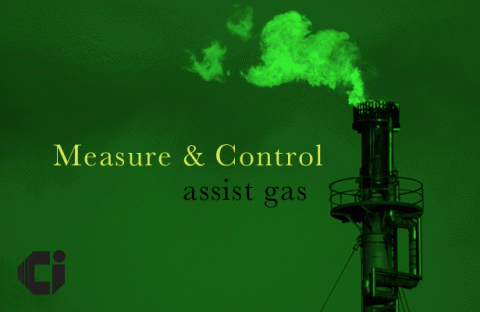
Flare stacks are often used to dispose of the waste products from batch chemical processes. Their waste streams may contain many components such as ethylene, propylene, natural gas, mineral spirits, ethyl acetate, ethanol, hydrogen, isobutyl acetate and isobutanol, to name a few. Not only are these streams complex but the production units are often high-volume continuous processes that operate 24 hours, seven days a week. On top of these intense conditions is the fact that you must also meet certain state and federal regulations. How’s that for demanding!
Many of these issues can be addressed by answering 2 simple questions:
- Does your system have enough BTU’s?
- Are you adding the correct amount of assist gas?
Knowing how many BTU’s you have will not only help to ensure compliance (regulations indicate a minimum number of BTUs per standard cubic foot of waste gas that your system needs to have) but will allow you to properly control your assist gas flow rates (your system needs to be above the minimum without wastefully adding more than is needed to stay in compliance).
That’s why is essential to have a continuous monitoring system in place, so you can identify the minimum heating value and ensure proper combustion efficiency.

Add new comment